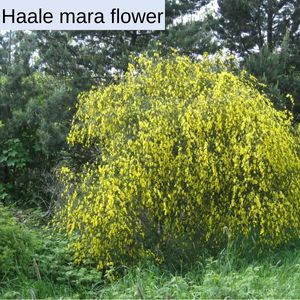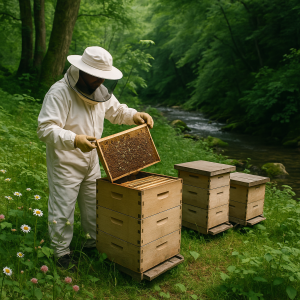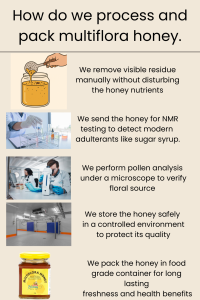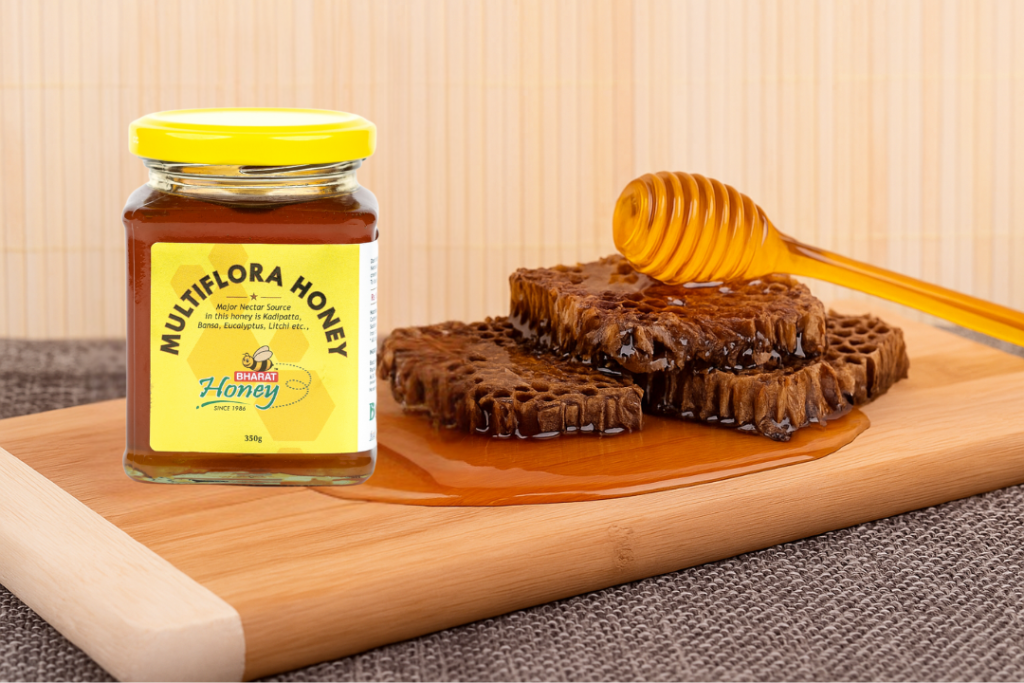Multiflora Himalayan Honey comes from the lush, remote forests of the northern Himalayas. In this region, bees collect nectar from a wide variety of wildflowers to make a rich and natural honey blend. Since the area is far from pollution and chemicals, many people also refer to it as forest honey.
📍 Geographical Origin of Multiflora Honey

Multiflora honey is mainly harvested in the deep, pollution-free forests of the northern Himalayan region. These forests provide ideal conditions for bees: clean water, a stable climate, and abundant nectar from diverse flowers.
Additionally, the area is rich in medicinal and herbal plants. As a result, the honey produced here offers excellent nutritional benefits and is often used for natural healing.
🌸 What Flowers Contribute to Multiflora Honey?
Bees collect nectar from many wild and medicinal plants. Some of the key nectar sources include:
-
Curry Leaves Tree (Sweet Neem) – used in traditional medicine

-
Bansa Flowers – known for respiratory benefits

-
Starflower (Borage) – contains omega-6 fatty acids

-
Furly Flowers – another forest-based medicinal plant

-
Shrubby Forest Plants – bloom throughout the year

-
Haale Mara – a strong nectar source for bees

-
Tamarind Trees – found widely in Himalayan forests

-
Hongemara Tree – evergreen and rich in pollen

-
Jamun Tree – attracts bees during blooming season

-
Soapnut and Bael Trees – provide steady nectar flow

Thanks to this floral diversity, multiflora honey carries a deep, complex taste and a powerful health profile.
🐝 Ethical and Sustainable Harvesting Practices

We follow ethical, sustainable, and hygienic methods while harvesting multiflora honey. Our team visits each location personally to supervise the process and ensure everything follows natural practices.
Beekeepers collect honey only from sealed combs. This method keeps the bee colony healthy and allows them to continue making more honey without stress.
Moreover, we place bee boxes deep in the forest, close to natural water streams and far from roads or pollution. This setup helps the bees work peacefully and keeps the honey pure and chemical-free.
🧴 How We Process and Pack Multiflora Honey

Once we receive raw honey from the beekeepers, we handle it carefully without damaging its natural properties. We don’t ultrafilter it or apply high heat.
Instead, we follow these steps:
-
We remove visible residue manually without disturbing the honey’s nutrients.
-
We send the honey for NMR testing to detect modern adulterants like sugar syrup or HFCS.
-
We perform pollen analysis under a microscope to verify floral sources.
-
We store the honey safely in a controlled environment to protect its quality.
-
We pack the honey in food-grade containers for long-lasting freshness and health benefits.
By doing all this, we ensure that every jar of multiflora honey remains 100% pure, raw, and trustworthy.
🍯 Nutrients in Multiflora Honey
Multiflora honey contains:
-
Natural Minerals
-
Enzymes
-
Vitamins
-
Amino Acids
-
Polyphenols and Flavonoids
-
Proteins
Together, these nutrients support overall health and make this honey more than just a sweetener.
💪 Benefits of Multiflora Honey

Thanks to its natural makeup, multiflora honey offers several health benefits:
-
Antioxidant support – fights free radicals and boosts immunity
-
Antibacterial effects – helps treat skin problems and minor infections
-
Anti-inflammatory action – reduces swelling and speeds up healing
-
Soothes cold and sore throat – works as a natural cough remedy
-
Improves digestion – when mixed with warm water or herbal teas
Whether used internally or applied externally, this honey brings real results.
✅ Conclusion
Multiflora honey is raw, unprocessed, and harvested straight from nature. It comes from the pollution-free forests of the northern Himalayas, where bees collect nectar from a wide variety of medicinal and wildflowers.
Because of its purity, rich nutrition, and natural healing properties, multiflora honey is one of the best choices for daily wellness.
📍Visit Us: Bharat Honey Location

